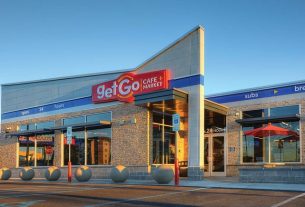Industries across the board continue to see rising costs for goods and services in the United States. Simultaneously, the supply chain slowdowns following the pandemic have resulted in shortages for both products and labor. These supply chain challenges, and the rapidly rising inflation as a result, have caused several businesses to adjust their prices as a response – and consumers are now paying higher prices.
Convenience store owners are especially feeling the pain after watching prices skyrocket for limited, unpredictable product availability.
As prices are growing, products are shrinking. Basic commodities such as paper goods, prepackaged food, and bagged ice are coming in smaller quantities – but for the same, or an increased, price. This phenomenon is called “shrinkflation” and it is affecting industries worldwide.
Consider an example that affects convenience stores more than you might expect: packaged ice. The industry standard size has been a 10-pound bag; however, it has quietly been reduced over the last few years to 7 pounds. “Meltflation” means that, depending on the delivery service, convenience store owners are paying 30 percent more for the same amount – or less – product than before.
The ice manufacturers who supply product for the delivery services traditionally used in convenience stores have decreased sizes in order to combat increasing costs of operation. From increasing fuel costs to labor shortages and higher wages, meltflation is a subtle way for ice producers to maintain revenue and combat the supply chain challenges exacerbated by the pandemic. These companies hope consumers and retailers won’t notice, but the small cuts add up.
Why the Traditional Ice Model is Broken
The most common way convenience stores across the country are selling ice is through the traditional bagged ice delivery model – but with new technology, in addition to the current supply chain challenges, this model is outdated and expensive. Before the ice reaches the store or the consumer, it is first made in a factory, packaged, stored and kept cold, shipped in a refrigerator truck, and stocked into the merchandiser until it is purchased.
Every step in the chain adds cost to the price of ice. People buy bagged ice in large quantities for various reasons, from filling coolers to providing ice for parties, and more. The smaller the bag is, the more the customer will need to buy, which means spending more money just to satisfy their needs.
The increased cost isn’t the only problem – the quality and sanitation of delivered ice aren’t up to consumer standards, either. Bags are handled by many hands and can often be susceptible to tearing during transportation. Plus, as ice melts and re-freezes throughout the process, it tends to clump together, so customers have to slam their bags on the ground to break up the cubes. This introduces further contamination risk.
Furthermore, bagged ice delivery presents issues with maintaining stock – particularly in warmer months and holidays. Because ice merchandisers have limited capacity, ice often runs out of stock during peak demand. Not only do convenience store owners miss out on profit, but the lack of availability reduces consumer confidence.
The convenience store industry, like most others in the past few years, has faced significant labor challenges and staff shortages. Following the Great Resignation, convenience stores have limited help and struggle to meet consumer demand. Plus, restocking the ice merchandiser or loading and unloading trucks means employees are spending less time tending to customers’ needs.
The Solution to Meltflation
The answer to these issues comes in the form of innovation and the emergence of new technology in the ice industry. Ice and water vending is the cost-effective, eco-friendly alternative that allows convenience store owners to sell ice 24 hours a day, regardless of store hours or personnel availability. This unique business model is rapidly gaining popularity and has grown into a multi-billion dollar industry.
Because ice is made fresh at the source, it eliminates the reliance on a delivery supply chain, and stock is replenished as it is purchased. Since ice vending is self-serve, additional employees aren’t necessary to operate the machine or worry about replenishing inventory. Furthermore, it’s more sanitary with the customer being the only person to handle their own ice, and no slamming on the ground is necessary since the ice hasn’t melted and refrozen.
Ice vending combats meltflation because it costs less than 25 cents to produce 10 pounds of ice compared to the average $1.25 to $1.50 for a smaller 7-pound bag to be delivered. This means store owners can offer economical prices while offering more product and higher convenience to their customers – all while seeing higher profit margins.
Ice and water vending is an exceedingly economical solution that provides convenience and savings for both store owners and their customers.



